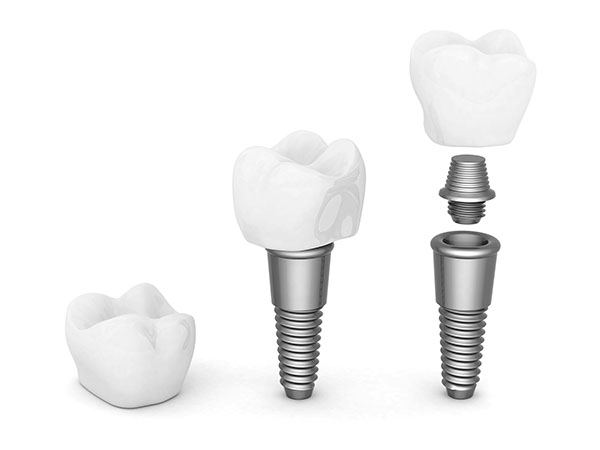

The great thing about dental implants is that they are not an upstart treatment but have been around for literally thousands of years. The first dental implants can be traced back to ancient Mayan women who would hammer pieces of shell or bone into their patient's gums to replace teeth. Today, there are the benefits of modern science, allowing us to use the most sophisticated technology and materials to make a tooth that looks, feels, and behaves like a naturally occurring tooth. New fake teeth held in place by a dental implant are so natural looking that after a while even the patients forget which teeth they had replaced. Here are a few fun facts that make dental implants stand head and shoulders above their competition.
Dental implants are custom fabricated in the laboratory using a space age material. Most people do not realize this, but the humble screw that is placed in your gum to hold a tooth in place is made of titanium, the same material that NASA uses for space crafts. This is done because titanium is extremely hardy and durable, making it the perfect material for both spacecraft and dental implants.
Dental implants are the strongest and longest lasting of all devices used to replace teeth. Since they are made of titanium, the dental implants have a fundamental advantage when it comes to longevity. In addition to this, they are securely placed into the jawbone where they are protected and nurtured by the jawbone itself. This leads to a much longer lifecycle than a device placed on top of the gums, such as dentures.
Dental implants actually stimulate the jawbone, imitating the action of your naturally occurring tooth root. The root provides invaluable stimulus to the jawbone which is lost when the tooth falls out. This can lead to complications like resorption of the jawbone. The dental implants will actually imitate this stimulus which is provided by the pressure of chewing and using the teeth, helping to increase the viability of the jawbone itself. This is the only oral prosthetic that actually encourages natural growth.
Brightly colored decor and activities such as toys, games, or movies help create a welcoming…
Understanding how dental sealants work is the first thing an adult needs to do when…
Selecting a qualified cosmetic dentist is crucial for achieving optimal results in both corrective and…
One of the procedures that can be used to effectively get your smile back to…
Laser dentistry is a painless, minimally invasive procedure that usually does not require an anesthetic…
Pain is often the first indicator that you may require a visit to the emergency…